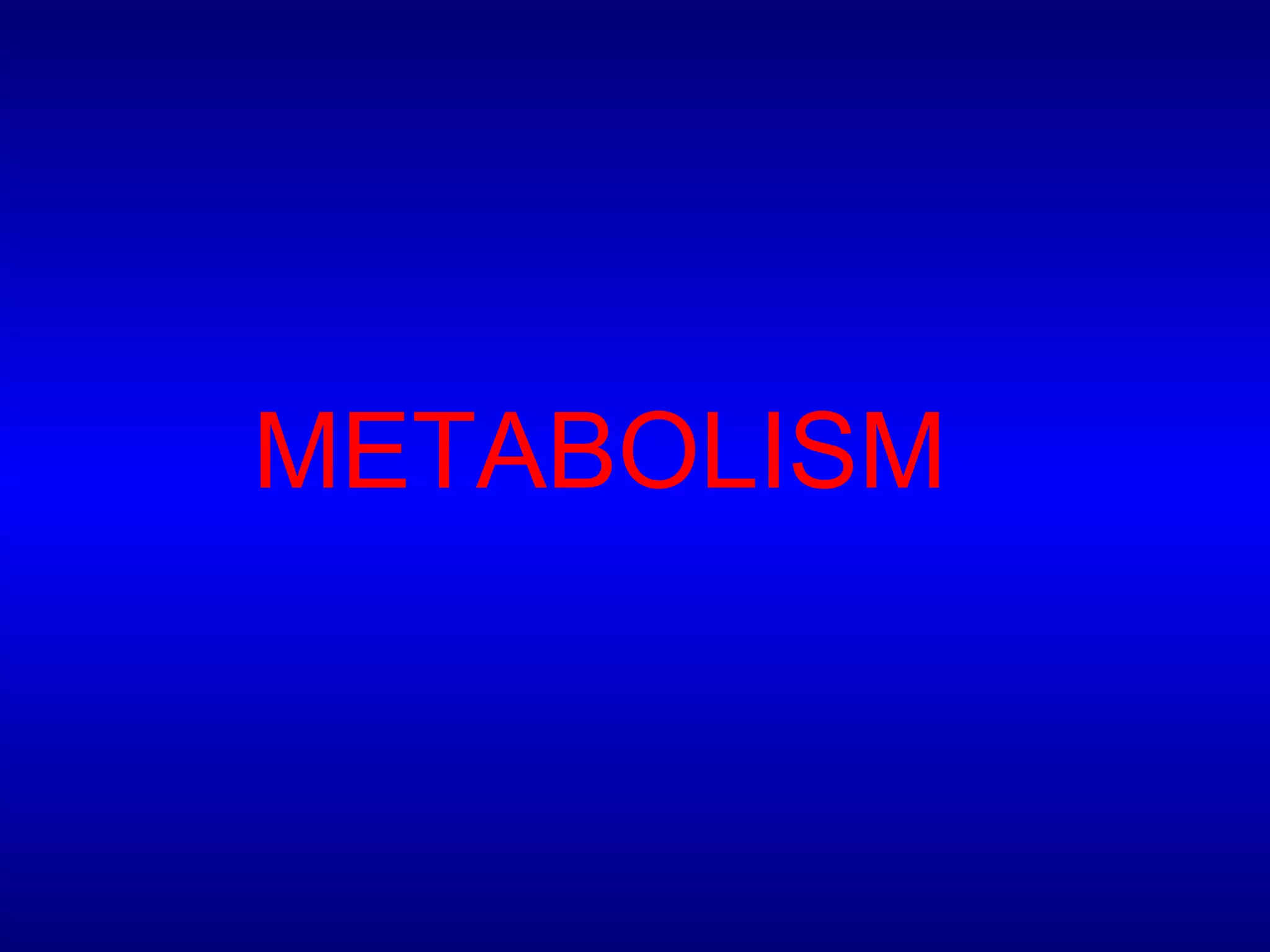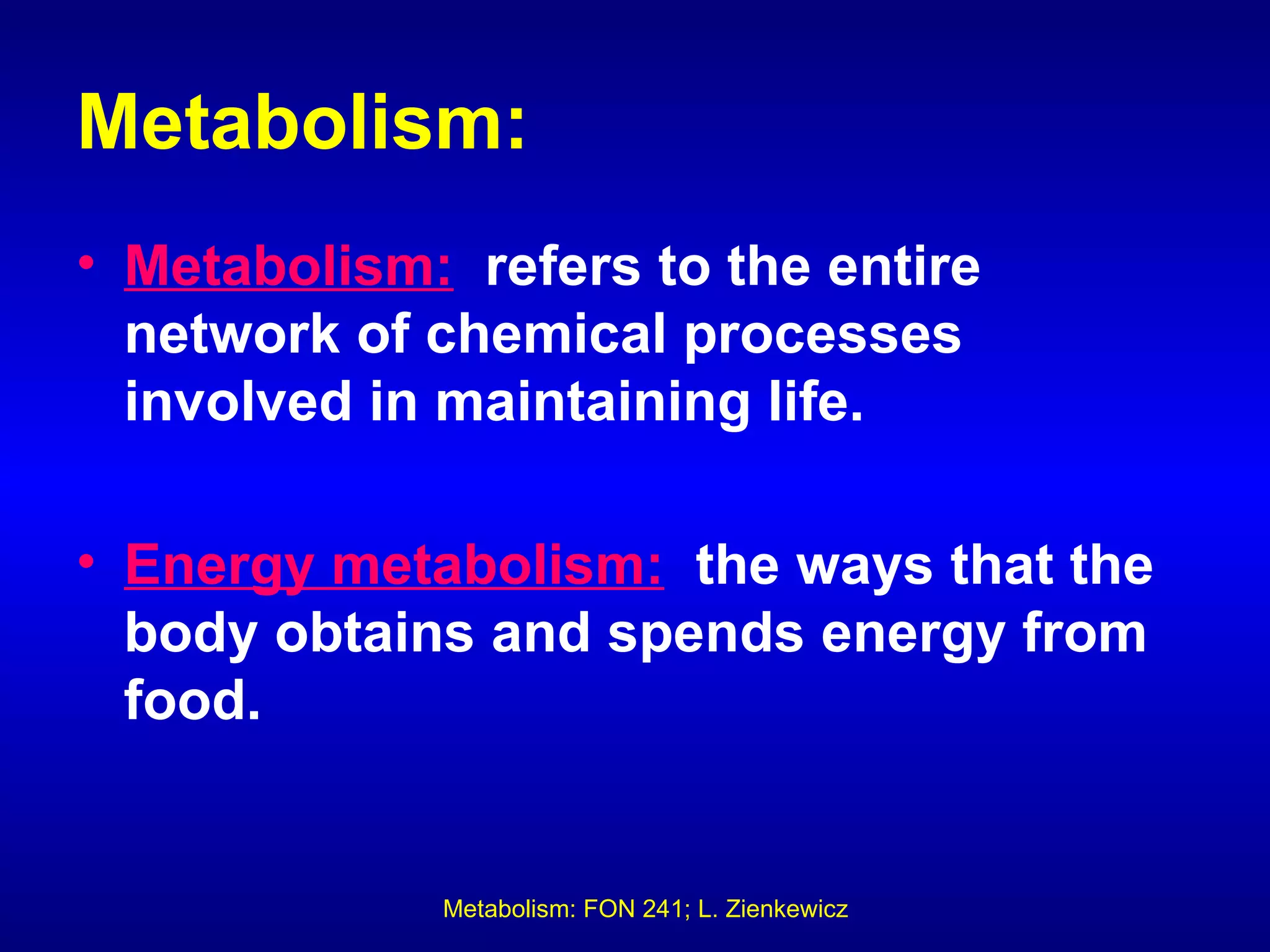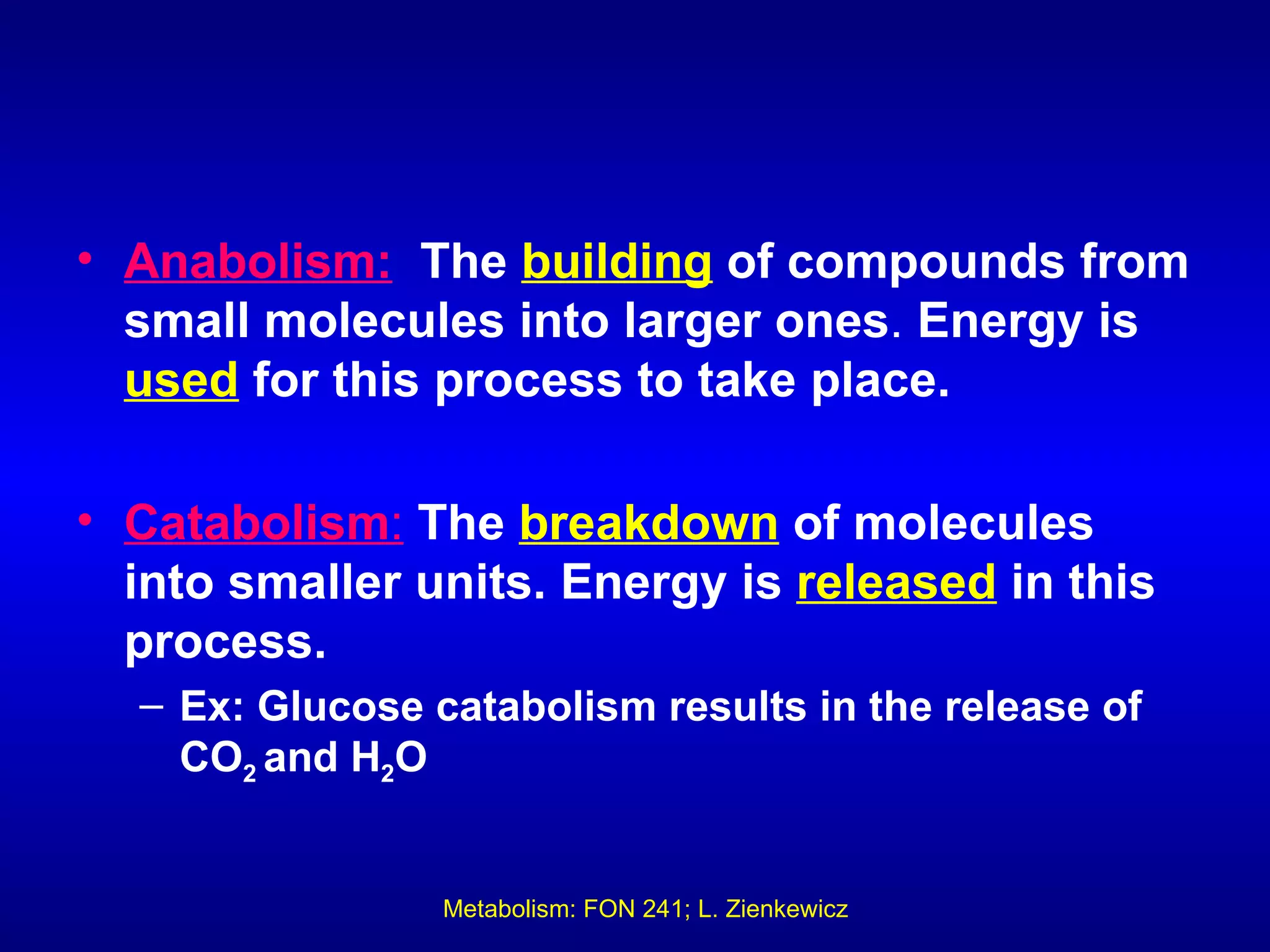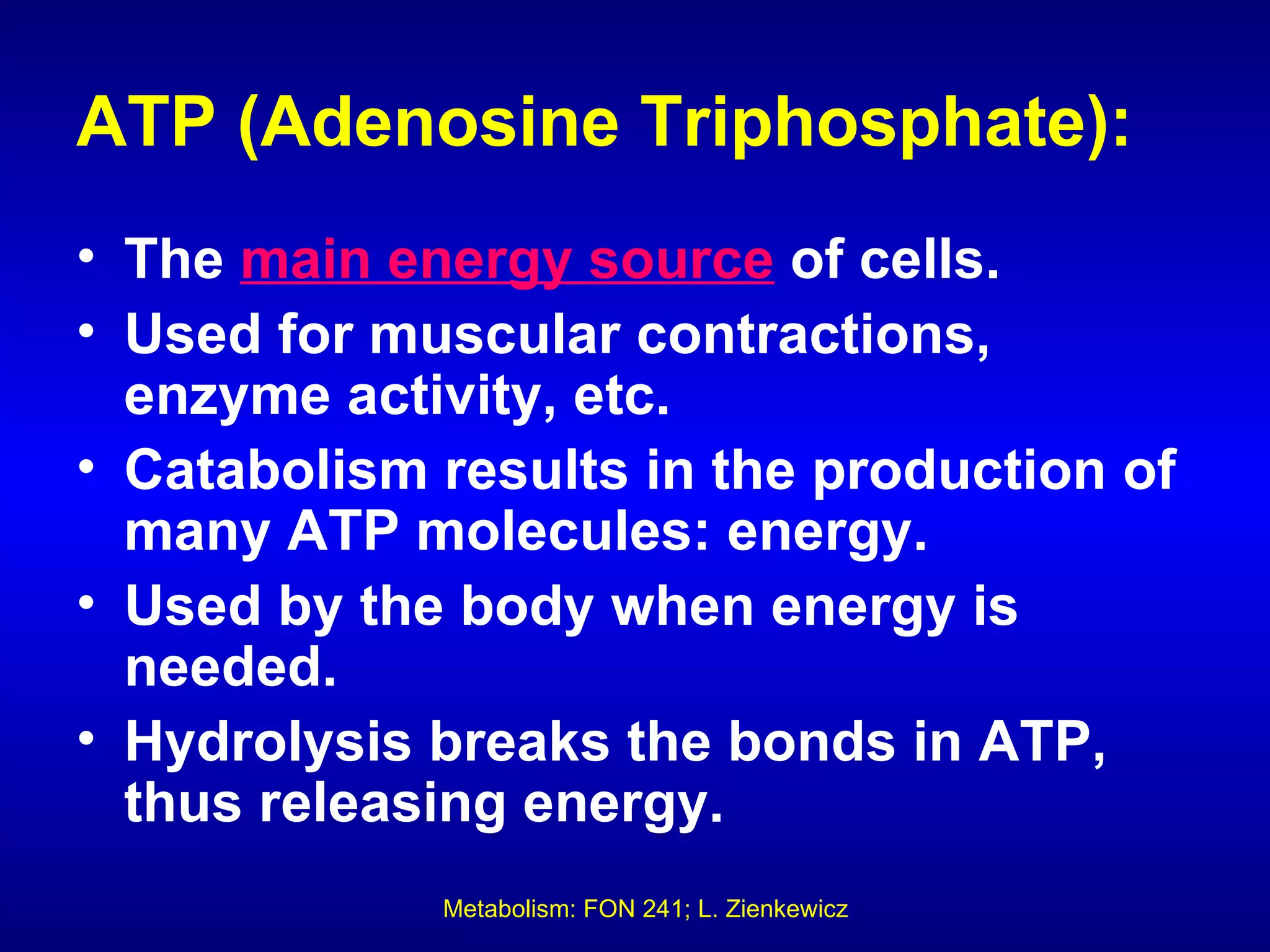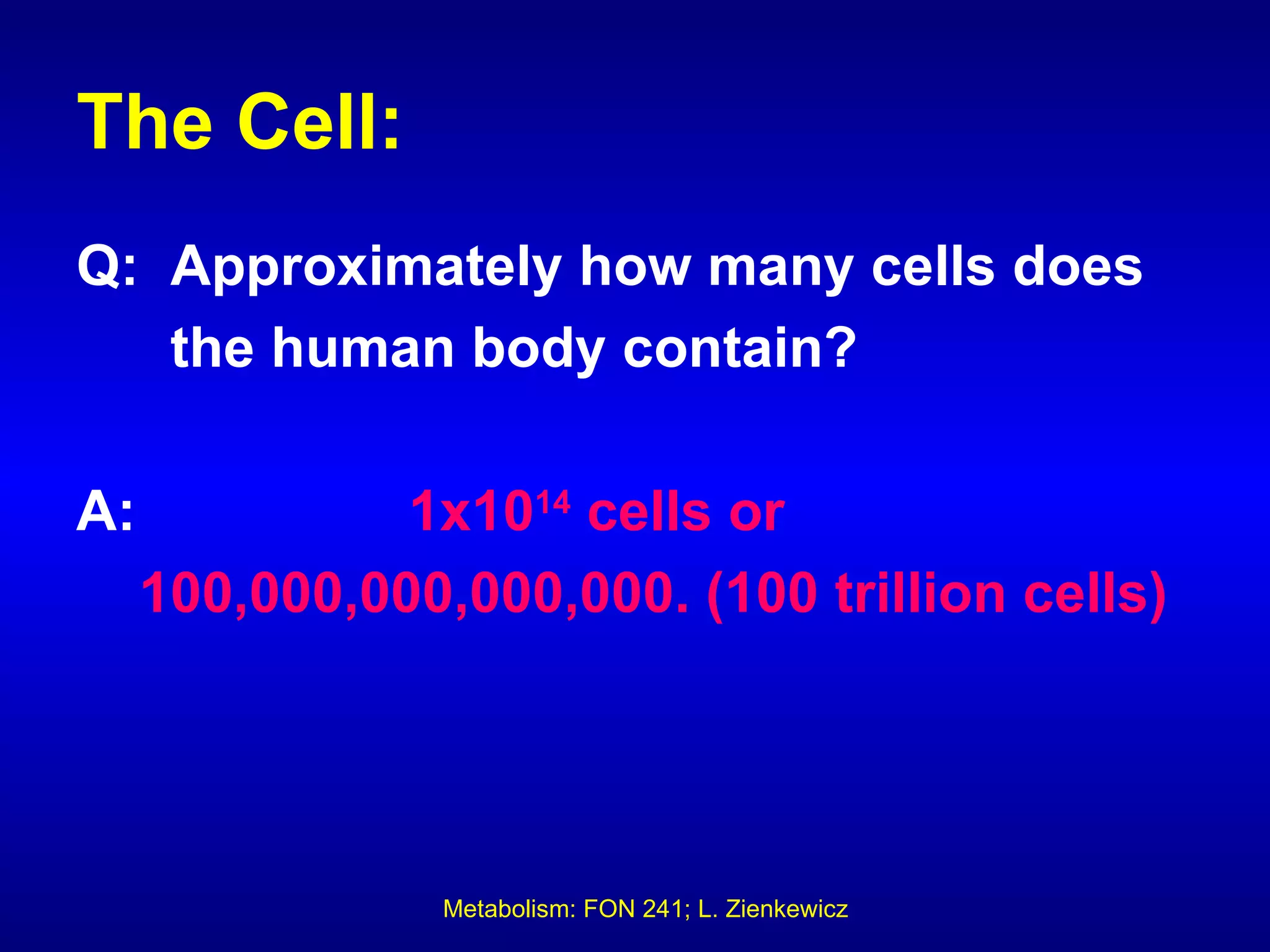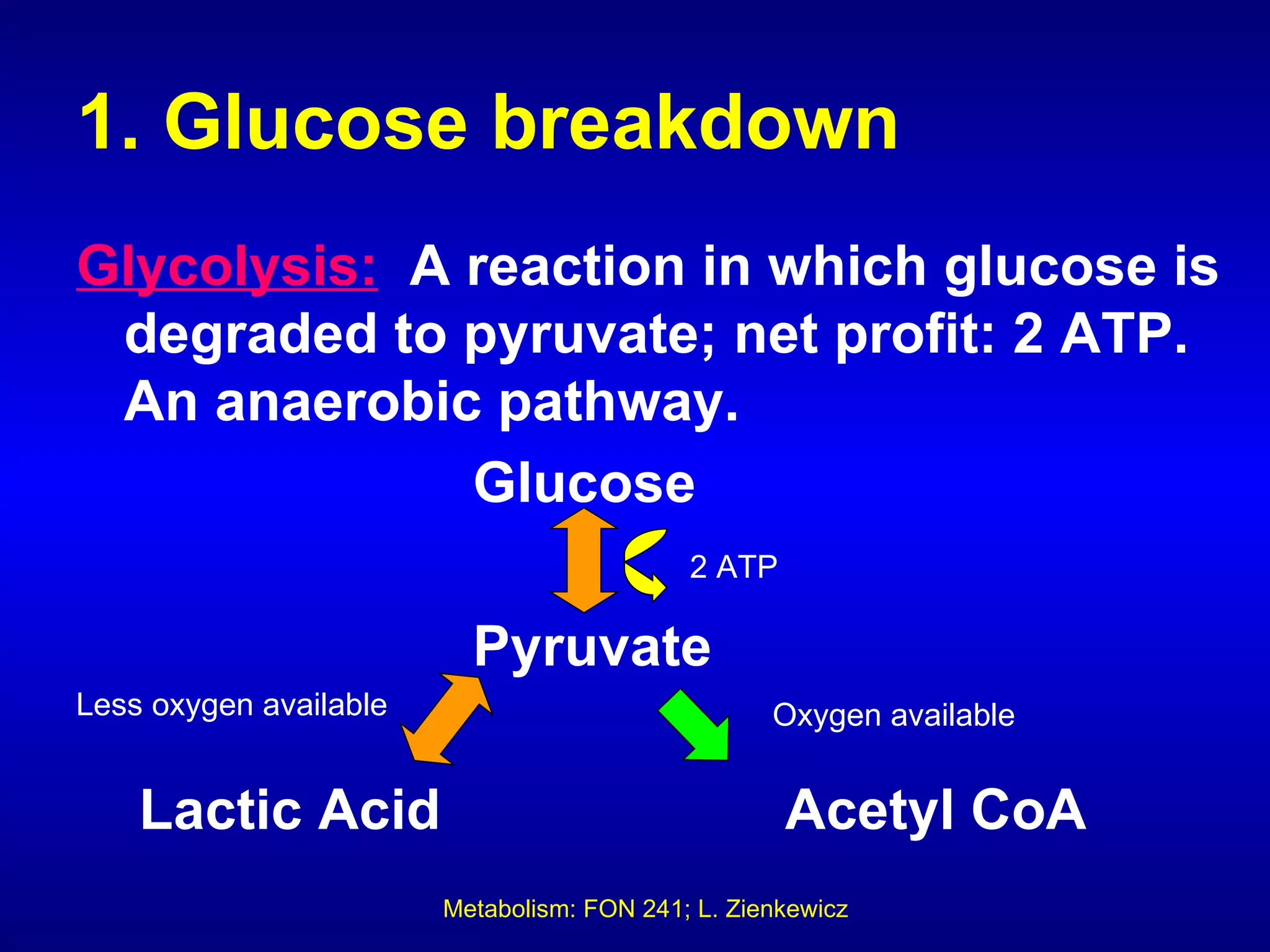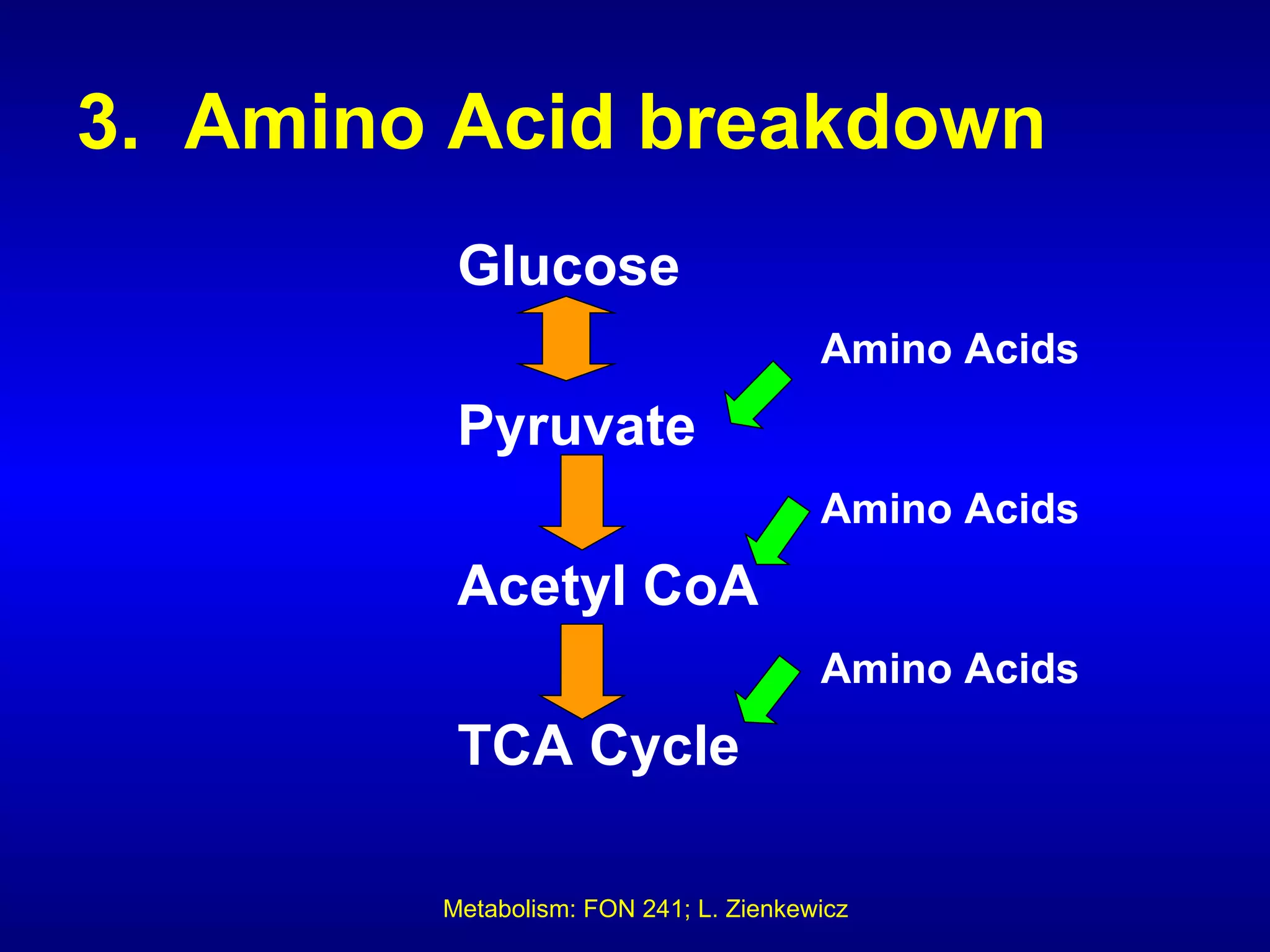Metabolism refers to the chemical processes that maintain life, including energy metabolism and the building and breakdown of compounds. Energy is used to build larger molecules through anabolism and released during catabolism. ATP is the main energy source for cells, produced through catabolism. Metabolic efficiency converts about 50% of food energy to ATP with the rest lost as heat. Nutrients are broken down into smaller units through digestion then further broken down into two-carbon compounds to be degraded into carbon dioxide and water, releasing energy. Enzymes and coenzymes facilitate these chemical reactions.
